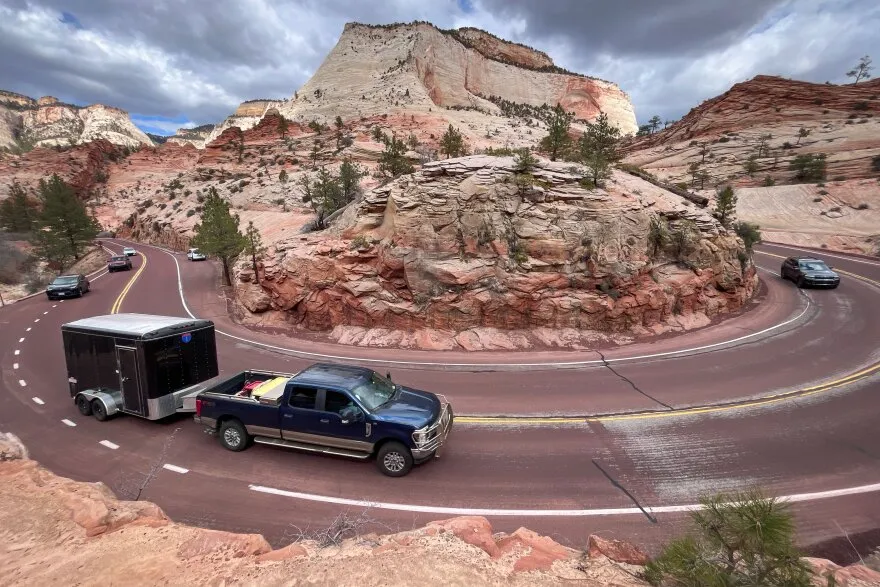Zion National Park. Just the name conjures images of towering sandstone cliffs, emerald pools, and the Virgin River carving its way through a landscape unlike any other. If you're anything like me, you've probably seen the breathtaking photos and dreamt of experiencing it firsthand. But then the practical questions start to creep in: how many days to spend in Zion National Park to truly soak it all in? Is one day enough? Do you need a full week? Having been fortunate enough to explore this magnificent park myself, I can tell you that the answer isn't one-size-fits-all. It truly depends on your travel style, your fitness level, and what you hope to get out of your visit. But fear not, fellow adventurer! The I and National Park Shops team are here to guide you through various itineraries, from a whirlwind one-day dash to a more leisurely three-day immersion, helping you decide exactly how many days to spend in Zion National Park to create your perfect adventure.
Zion is a place that demands your attention, a geological masterpiece that unfolds with every turn. From the iconic Angels Landing to the serene Pa'rus Trail, there's a hike for every skill level and a view around every corner that will leave you speechless. The park's unique shuttle system, designed to protect its delicate ecosystem, adds another layer to planning your visit, but it's incredibly efficient once you get the hang of it. Whether you're a seasoned hiker looking to conquer challenging trails or a family seeking accessible natural beauty, Zion has something for everyone. Let's dive into how you can make the most of your time in this unforgettable national park.
How Many Days Do You Need in Zion?
Deciding how many days to spend in Zion National Park is the first crucial step in planning your trip. While you can certainly get a taste of Zion in a single day, to truly experience its diverse landscapes and iconic trails, I'd recommend at least two to three days. This allows for a deeper exploration of the main canyon, opportunities to venture into less crowded areas, and a chance to truly connect with the park's natural beauty without feeling rushed. If you're an avid hiker or plan to tackle more strenuous trails like The Narrows or Angels Landing (which often require permits and significant time), then three days or more would be ideal. For those with limited time, a well-planned one-day itinerary can still offer a memorable glimpse into Zion's grandeur. Ultimately, the key is to align your expectations with the time you have available. Let's break down what each timeframe offers.
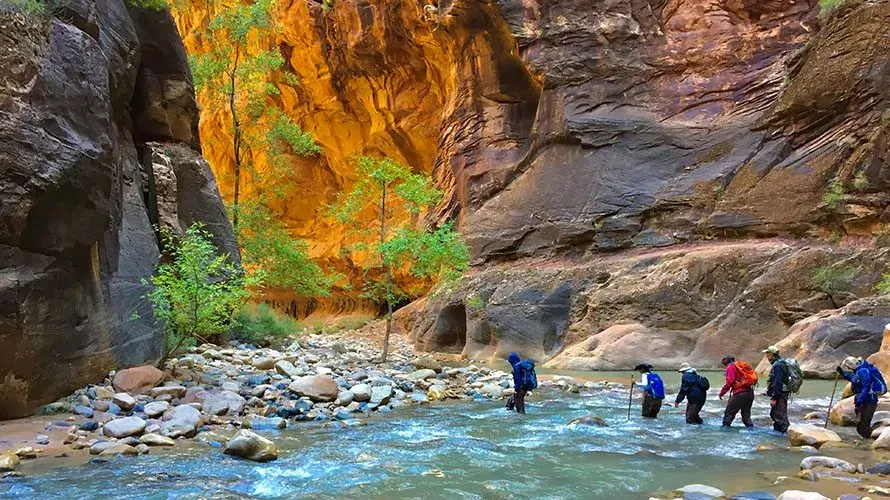
1 Day In Zion Itinerary
If you only have one day to explore Zion National Park, it's crucial to have a strategic plan to maximize your experience. While it's impossible to see everything, you can certainly hit some of the park's highlights and get a good feel for its majestic beauty. My personal recommendation for a single day in Zion focuses on the main canyon, utilizing the efficient shuttle system.
- Arrive Early and Shuttle In: Get to the Zion Canyon Visitor Center as early as possible, ideally before 8:00 AM, especially during peak season. Parking fills up quickly, and the shuttle lines can get long. The shuttle is your primary mode of transport within the main canyon, as private vehicles are generally not allowed on the scenic drive for most of the year. Grab a map and familiarize yourself with the shuttle stops.
- Emerald Pools Trail (Lower and Middle): Take the shuttle to Stop #5 (Zion Lodge) and embark on the Lower and Middle Emerald Pools Trails. This is a relatively easy to moderate hike that offers stunning views of waterfalls and lush hanging gardens. The Lower Pool is paved and accessible, while the Middle Pool offers a bit more elevation gain and different perspectives. It's a great way to start your day with some iconic Zion scenery without being overly strenuous.
- Riverside Walk: From the Temple of Sinawava (Shuttle Stop #9), take a leisurely stroll along the paved Riverside Walk. This easy, scenic path follows the Virgin River and leads to the mouth of The Narrows. Even if you don't plan on wading into The Narrows, the Riverside Walk offers beautiful views and a chance to experience the canyon from its floor. It's a relatively flat and accessible trail, perfect for all ages.
- Picnic Lunch: Pack a picnic lunch to enjoy along the Riverside Walk or at one of the designated picnic areas. This saves time and allows you to stay immersed in the park's beauty.
- Pa'rus Trail: If time allows and you're looking for a more relaxed experience, consider walking or biking a portion of the Pa'rus Trail. This paved, accessible trail runs alongside the Virgin River from the Visitor Center to Canyon Junction. It's a great option for a gentle stroll with beautiful views, and it's one of the few trails in Zion where pets are allowed (on leash).
- Canyon Overlook Trail (East Side): If you have a car and are willing to drive outside the main canyon, the Canyon Overlook Trail on the east side of the park (accessible via the Zion-Mount Carmel Highway) offers a spectacular panoramic view of Zion Canyon. This is a short, moderate hike, but it can be crowded, and parking is limited. It's a fantastic sunset spot if you time it right.
- Watchman Overlook (near Visitor Center): For a classic Zion photo opportunity, head to the Watchman Overlook near the Visitor Center for sunset. The light on the Watchman peak is truly magical as the sun dips below the horizon.
This one-day itinerary provides a solid overview of Zion's beauty, focusing on accessible and iconic trails within the main canyon. Remember to stay hydrated, wear appropriate footwear, and respect park regulations.
>> Read More: The 6 Closest Airport To Zion National Park: Local Tips
2 Days In Zion National Park Itinerary
With two days in Zion, you can delve deeper into the park's wonders, allowing for more extensive hikes and a less rushed experience. This itinerary builds upon the one-day plan, offering a more comprehensive exploration.
Day 1: Main Canyon Highlights & Iconic Views
- Morning (Early Start is Still Key!):
Begin your day early, arriving at the Visitor Center before the crowds. Take the shuttle to the Temple of Sinawava (Stop #9) and hike the Riverside Walk. This paved path leads to the mouth of The Narrows. If you're feeling adventurous and have the appropriate gear (water shoes, hiking poles), consider wading into The Narrows for a short distance. Even a brief venture into the cool water and towering canyon walls is an unforgettable experience. Remember to check the flash flood potential before entering The Narrows.
- Late Morning/Early Afternoon: Emerald Pools Trail System:
After returning from the Riverside Walk, take the shuttle back to Zion Lodge (Stop #5) and explore the full Emerald Pools Trail system (Lower, Middle, and Upper). The Upper Emerald Pool offers a more challenging hike with rewarding views of waterfalls cascading into the pools below. This entire loop can take a few hours, so pack snacks and water.
- Afternoon: Scenic Drive & Pa'rus Trail:
Enjoy a leisurely shuttle ride along the Zion Canyon Scenic Drive, taking in the breathtaking views. You can hop off at various stops for photo opportunities or short strolls. In the late afternoon, consider walking or biking the Pa'rus Trail from the Visitor Center. It's a beautiful, accessible path that offers different perspectives of the Virgin River and the surrounding cliffs.
- Evening: Sunset at the Watchman:
Head back to the area near the Visitor Center for sunset. The Watchman peak, illuminated by the setting sun, provides an iconic and truly magical photographic moment. Afterwards, enjoy dinner in Springdale, the town just outside the park entrance, which offers a variety of dining options.
>> Read More: 16 Best Things to Do in Zion National Park: Unique Experiences
Your second day offers flexibility based on your interests and energy levels.
Option A: East Side Exploration (Zion-Mount Carmel Highway): If you have your own vehicle, dedicate your second day to exploring the East Side of Zion via the Zion-Mount Carmel Highway. This scenic drive is a marvel of engineering, featuring switchbacks and a historic tunnel. Stop at the Canyon Overlook Trail for a relatively short (1-mile round trip) but incredibly rewarding hike that offers one of the most spectacular panoramic views of Zion Canyon. Continue further east to explore Checkerboard Mesa, known for its unique cross-hatching patterns. This side of the park offers a different geological perspective and is generally less crowded than the main canyon.
Option B: Angels Landing (Permit Required) or Observation Point: For the adventurous and well-prepared, Day 2 could be dedicated to a more challenging and iconic hike. Angels Landing is world-renowned for its exhilarating chain-assisted ascent and breathtaking views, but it requires a permit obtained through a lottery system. If you don't secure a permit, or prefer a less exposed but equally rewarding challenge, consider hiking to Observation Point (via the East Mesa Trail or the more strenuous Weeping Rock Trail, if open). Observation Point offers an unparalleled bird's-eye view of Zion Canyon, including Angels Landing itself. Both of these hikes are full-day commitments and require significant planning, water, and appropriate gear.
Alternative for Day 2: Hidden Canyon or Sand Bench Trail: If the more strenuous hikes aren't for you, or if permits are an issue, consider the Hidden Canyon Trail (check for current conditions and closures) for a fun, moderate hike with some scrambling, or the Sand Bench Trail for a unique experience through deep sand, often done on horseback.
This two-day itinerary provides a fantastic balance of iconic sights, diverse landscapes, and opportunities for both leisurely exploration and challenging adventures, allowing you to truly appreciate the grandeur of Zion National Park.
>> Read More: Camping Near Zion National Park: Best Spots (Reservation)
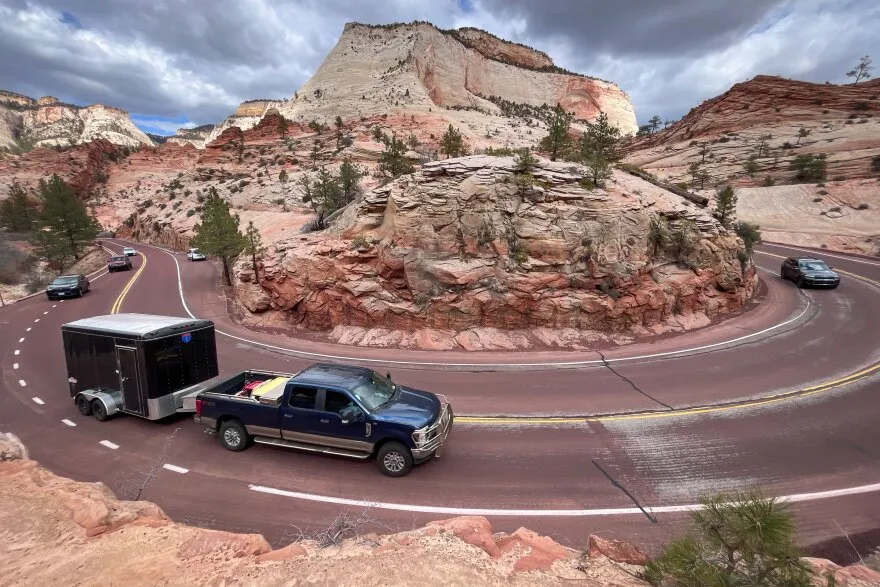
How to Spend 3 Days in Zion National Park?
Three days in Zion National Park is, in my opinion, the sweet spot. It allows you to experience the park's most iconic trails, explore different areas, and even revisit a favorite spot without feeling rushed. This itinerary combines the best of the previous two, adding depth and flexibility.
Day 1: Main Canyon Immersion & Iconic Views
- Morning (Early Start is Non-Negotiable!):
Arrive at the Visitor Center well before 8:00 AM. Take the shuttle directly to the Temple of Sinawava (Stop #9). Begin your day with the Riverside Walk, a paved trail leading to the entrance of The Narrows. If conditions allow and you have the proper gear (rentable in Springdale), spend a few hours wading into The Narrows. Even a short venture into this slot canyon is an unforgettable experience, with towering walls and the Virgin River as your path. Remember to check the flash flood forecast before you go.
- Late Morning/Early Afternoon: Emerald Pools Trail System:
After returning from The Narrows, take the shuttle back to Zion Lodge (Stop #5). From here, explore the entire Emerald Pools Trail system (Lower, Middle, and Upper). The Upper Emerald Pool offers a more challenging ascent but rewards you with stunning views of waterfalls and lush hanging gardens. This entire system can take 2-4 hours depending on your pace and how much you explore.
- Afternoon: Pa'rus Trail & Canyon Junction:
As the afternoon progresses, consider a leisurely walk or bike ride along the Pa'rus Trail. This accessible, paved trail runs from the Visitor Center to Canyon Junction and offers beautiful riverside views. It's a great way to unwind after more strenuous hikes and capture some lovely photos of the Virgin River and the Watchman.
- Evening: Sunset at the Watchman:
Head to the iconic Watchman Overlook near the Visitor Center for sunset. The way the light hits the Watchman peak as the sun dips below the horizon is truly breathtaking and a quintessential Zion experience. Enjoy dinner in Springdale, which boasts a variety of restaurants to suit all tastes.
Dedicate your second day to exploring the unique landscapes of Zion's East Side, which offers a stark contrast to the main canyon and is often less crowded.
- Morning: Zion-Mount Carmel Highway & Canyon Overlook Trail:
Drive your personal vehicle along the magnificent Zion-Mount Carmel Highway. This engineering marvel offers incredible views as it winds through tunnels and switchbacks. Your primary destination should be the Canyon Overlook Trail. This relatively short (1-mile round trip) but moderately challenging hike leads to one of the most iconic viewpoints in the park, offering a sweeping panorama of Zion Canyon. Parking for this trailhead is very limited, so arrive early or be prepared to wait.
- Late Morning/Early Afternoon: Checkerboard Mesa & Beyond:
Continue further east on the Zion-Mount Carmel Highway to see Checkerboard Mesa, a unique sandstone formation with distinctive cross-hatching patterns. You can also explore some of the less-trafficked areas on this side of the park, perhaps a short walk along the slickrock or simply enjoying the solitude and different geological formations.
- Afternoon: Return to Springdale or Short Hike:
Head back towards Springdale. Depending on your energy levels, you could either relax and explore the shops and galleries in Springdale, or if you're up for another short hike, consider the Weeping Rock Trail (check for current conditions and closures) or a portion of the Grotto Trail.
- Evening: Stargazing:
Zion boasts incredibly dark skies. Find a spot away from the bright lights of Springdale (the Pa'rus Trail is a good option) and enjoy some stargazing. The sheer number of stars visible in Zion is truly mesmerizing.
Your third day is perfect for tackling a more challenging hike or exploring some of Zion's lesser-known, but equally rewarding, trails.
Option A: Angels Landing (Permit Required): If you were lucky enough to secure a permit through the lottery system, dedicate your third day to conquering Angels Landing. This iconic hike is not for the faint of heart, with chains bolted into the rock to assist climbers on the final ascent. The views from the top are unparalleled and an incredible reward for your efforts. This is a full-day commitment, requiring significant physical and mental preparation.
Option B: Observation Point (via East Mesa Trail): If Angels Landing isn't on your agenda, or you didn't get a permit, hiking to Observation Point via the East Mesa Trail is an excellent alternative. This trail is accessed from outside the main canyon (often requiring a shuttle service from Springdale to the trailhead) and offers a less strenuous but still long hike to a viewpoint that many argue is even better than Angels Landing, providing a commanding view of the entire main canyon, including Angels Landing itself. This is also a full-day hike.
Option C: Kolob Canyons (North Section): For a completely different Zion experience, consider driving to the Kolob Canyons section of the park, located in the northwest. This area is much less visited than the main canyon and offers stunning finger canyons, beautiful red rock scenery, and excellent hiking opportunities like the Taylor Creek Trail or the Kolob Arch Trail. It's a bit of a drive, but worth it for the solitude and unique views.
This three-day itinerary provides a comprehensive and unforgettable Zion experience, allowing you to explore its diverse landscapes, challenge yourself on iconic trails, and discover hidden gems. Remember to always check current park conditions, weather forecasts, and shuttle schedules before heading out.
>> Read More: Best Private Tours Of Zion National Park For Traveller
How to get around Zion National Park
Navigating Zion National Park is a unique experience, primarily due to its highly efficient and mandatory shuttle system. For most of the year, private vehicles are not allowed on the scenic drive into Zion Canyon, making the shuttle your best friend for getting around. Understanding how to use it is key to a smooth and enjoyable visit.
The Zion Canyon Shuttle System
This free shuttle service operates from early spring through late fall (typically March to November, but check the official NPS website for exact dates and times, as they can vary seasonally). It runs from the Zion Canyon Visitor Center, just inside the park entrance, and makes nine stops along the scenic drive, taking you to all the major trailheads and points of interest within the main canyon. The shuttles are frequent, usually arriving every 10-15 minutes, making it incredibly convenient to hop on and off as you explore.
- Visitor Center: This is where you'll park your car (if you're driving) and board the shuttle. Arrive early, as parking lots fill up quickly, especially during peak season. If the main lot is full, you might need to park in the town of Springdale and take the Springdale Shuttle to the park entrance.
- Zion Lodge (Stop #5): A central hub with lodging, a restaurant, and access to the Emerald Pools Trail.
- The Grotto (Stop #6): Access point for Angels Landing (with permit) and the West Rim Trail.
- Weeping Rock (Stop #7): Access to the iconic Weeping Rock trail (check for closures).
- Temple of Sinawava (Stop #9): The final stop, and the starting point for the Riverside Walk and The Narrows.
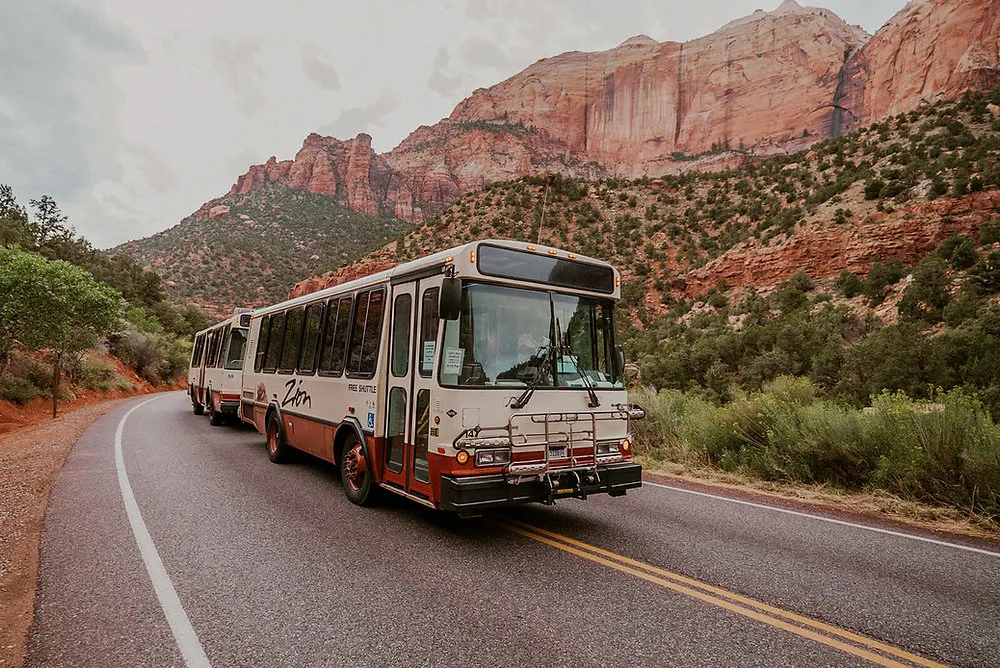
The Springdale Shuttle
In addition to the park shuttle, the town of Springdale operates its own free shuttle system. This shuttle runs along the main road in Springdale, stopping at various hotels, restaurants, and shops, and connects directly to the pedestrian entrance of Zion National Park. This is incredibly useful if you're staying in Springdale and want to avoid driving and parking at the Visitor Center. You can simply park your car at your accommodation or a designated parking area in town and use the Springdale Shuttle to get to the park entrance.
Private Vehicles (Limited Access)
While the main scenic drive is closed to private vehicles for much of the year, you can still drive the Zion-Mount Carmel Highway (Highway 9) which connects the south entrance to the east entrance of the park. This road offers stunning views, including the famous Zion-Mount Carmel Tunnel and access to the Canyon Overlook Trail. If you plan to explore the East Side of the park or the Kolob Canyons section (located in the park's northwest), you will need your own vehicle.
Tips for Getting Around:
- Check Shuttle Schedules: Always check the most current shuttle schedules on the NPS website or at the Visitor Center, as operating hours change seasonally.
- Arrive Early: This cannot be stressed enough, especially during peak season. Early arrival means better parking and shorter shuttle lines.
- Be Patient: During busy times, shuttle lines can be long. Be prepared to wait, and use the time to plan your next move or simply enjoy the scenery.
- Consider E-Bikes: E-bikes are becoming a popular option for exploring the scenic drive when private vehicles are restricted. You can rent them in Springdale.
- Stay Hydrated: Regardless of how you're getting around, always carry plenty of water, especially during warmer months.
By understanding and utilizing Zion's transportation options, you can efficiently and enjoyably explore all that this incredible national park has to offer.
Best time to visit Zion National Park
Choosing the best time to visit Zion National Park can significantly impact your experience, influencing everything from crowd levels to weather conditions and accessibility. Having visited Zion during different seasons, I can tell you that each has its unique charm, but also its challenges. Your ideal time to visit will largely depend on your priorities: avoiding crowds, enjoying specific activities, or experiencing certain weather.
Spring (March to May):
Spring is often considered one of the best times to visit Zion. The temperatures are mild and pleasant, perfect for Zion hiking. The Virgin River is usually flowing well, and the waterfalls are active, making for stunning scenery. Wildflowers begin to bloom, adding vibrant colors to the landscape. However, spring break can bring significant crowds, especially in March and April. The shuttle system is typically in full operation during this time. If you plan to hike The Narrows, the water can still be quite cold, and flash flood potential needs to be monitored closely.
Summer (June to August):
Summer is Zion's peak season, and for good reason: the weather is consistently warm, and all park facilities and trails are generally open. This is the best time for water-based activities like hiking The Narrows (though permits might be required for certain sections). However, be prepared for intense heat, especially in July and August, with temperatures often exceeding 100°F (38°C). Crowds are at their absolute maximum, meaning long lines for shuttles, crowded trails, and limited parking. Early morning starts are essential to beat both the heat and the crowds. Monsoon season typically begins in mid-July and extends through August, bringing afternoon thunderstorms and a higher risk of flash floods, which can close slot canyons like The Narrows.
>> Read More: 13 Zion National Park Caves: Must-Visit Spots
Fall (September to November):
Fall is, in my opinion, the absolute best time to visit Zion National Park. The weather is fantastic, with comfortable temperatures that are ideal for hiking. The crowds begin to thin out after the summer rush, especially in October and November. The autumn foliage, particularly along the Virgin River, transforms the canyon into a breathtaking display of reds, oranges, and golds. The shuttle system usually operates through late fall. Flash flood risk decreases significantly compared to summer. This is a prime time for photography and enjoying the park's beauty in a more serene setting. If you're wondering how many days to spend in Zion National Park to truly enjoy the scenery and hiking without overwhelming crowds, fall is your answer.
Winter (December to February):
Winter in Zion offers a completely different, and often magical, experience. The park is much quieter, providing a sense of solitude that's hard to find during other seasons. Snowfall can dust the red rock cliffs, creating stunning contrasts and unique photographic opportunities. Temperatures are cooler, but often mild enough for hiking during the day. The main scenic drive is usually open to private vehicles during winter, as the shuttle system is typically not running (check NPS website for exact dates). However, some trails may be icy or closed due to snow, and The Narrows is generally too cold for hiking without specialized dry suits. Services within the park and in Springdale may also be limited. If you prefer tranquility and don't mind cooler temperatures, winter can be a truly rewarding time to visit.
Key Considerations for Any Season:
- Crowds: Zion is one of the most popular national parks. Expect crowds, especially on weekends and holidays, regardless of the season. Arriving early in the morning is always your best strategy.
- Shuttle System: The shuttle is mandatory for accessing the main canyon for most of the year. Always check its operating schedule before your visit.
- Weather: Be prepared for varying weather conditions. Even in summer, temperatures can drop significantly in the evenings. Always carry layers, plenty of water, and sun protection.
- Flash Floods: This is a serious concern in Zion, especially during monsoon season (mid-July to September). Always check the flash flood potential before entering any slot canyons, including The Narrows.
- Permits: Popular hikes like Angels Landing require permits, which are obtained through a lottery system. Plan well in advance if you hope to do these hikes.
Ultimately, the best time to visit Zion National Park depends on your personal preferences. For a balance of good weather and manageable crowds, spring and fall are ideal. If you don't mind the heat and crowds, summer offers full accessibility to all activities. And for solitude and unique snowy landscapes, winter can be an unforgettable experience. No matter when you go, Zion will undoubtedly leave you in awe.
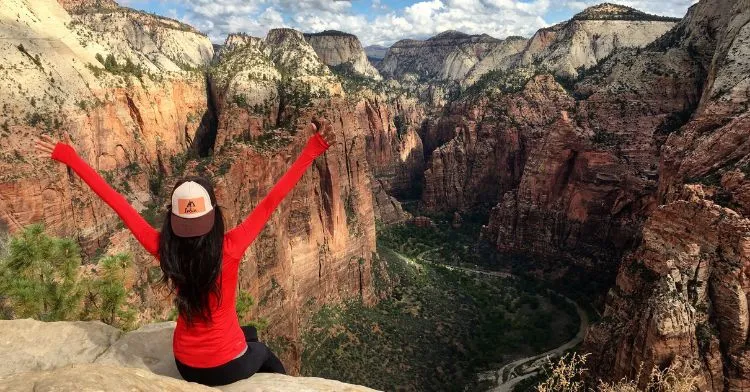
Tips for visiting Zion National Park
Visiting Zion National Park is an incredible experience, but a little preparation can go a long way in making your trip smooth and enjoyable. Based on my own visits and observations, here are some essential tips to help you make the most of your time in this magnificent park:
- Plan Ahead, Especially for Peak Season: Zion is incredibly popular, and for good reason. During peak season (spring, summer, and fall weekends/holidays), the park can get extremely crowded. Book accommodations, shuttle tickets (if required), and any guided tours well in advance. Check the official NPS website for current conditions, alerts, and operating hours before your visit.
- Arrive Early (or Late): To beat the crowds and secure parking at the Visitor Center, aim to arrive before 8:00 AM. Alternatively, consider visiting in the late afternoon/evening when many day-trippers are leaving. This also offers beautiful golden hour light for photography.
- Utilize the Shuttle System: Embrace the free Zion Canyon Shuttle. For most of the year, private vehicles are not allowed on the scenic drive. The shuttle is efficient and takes you to all the major trailheads. Familiarize yourself with the shuttle stops and schedule. If you're staying in Springdale, use the Springdale Shuttle to get to the park entrance.
- Stay Hydrated and Carry Plenty of Water: Zion's desert environment means it can get very hot and dry, especially in summer. Carry more water than you think you'll need, even for short hikes. Electrolyte drinks can also be beneficial. There are water filling stations at the Visitor Center and some shuttle stops.
- Dress in Layers and Wear Appropriate Footwear: Temperatures can fluctuate significantly throughout the day, and depending on the season. Dress in layers that you can easily add or remove. Sturdy, broken-in hiking boots with good ankle support are essential for most trails, especially if you plan on tackling uneven terrain or wading through water.
- Protect Yourself from the Sun: The sun in Zion can be intense. Wear a wide-brimmed hat, sunglasses, and apply high-SPF sunscreen regularly. Long-sleeved, light-colored clothing can also provide protection.
- Know Your Limits and Choose Hikes Wisely: Zion offers a wide range of trails, from easy paved walks to strenuous, exposed climbs. Research trails beforehand and choose ones that match your fitness level and comfort with heights. Don't attempt Angels Landing or The Narrows without proper preparation, gear, and permits (if required).
- Check Flash Flood Potential: This is critical, especially if you plan to hike in slot canyons like The Narrows. Flash floods can occur rapidly and without warning, even if it's not raining directly in the park. Always check the flash flood forecast at the Visitor Center or on the NPS website before entering any narrow canyons.
- Pack Snacks and Food: While there are dining options in Springdale and at Zion Lodge, packing your own snacks and picnic lunches can save time and money, allowing you to maximize your time on the trails. Remember to pack out everything you pack in.
- Leave No Trace: Help preserve Zion's natural beauty by following Leave No Trace principles. Stay on marked trails, pack out all trash, respect wildlife, and do not disturb natural features.
- Consider a Guided Tour or Ranger Program: If you're new to the park or want to learn more about its geology, history, and ecology, consider joining a ranger-led program or hiring a local guide. They can offer valuable insights and enhance your experience.
- Be Patient and Flexible: With the popularity of Zion, you might encounter crowds or unexpected closures. Maintain a positive attitude, be patient, and be flexible with your plans. Sometimes the best experiences come from unexpected detours.
By keeping these tips in mind, you'll be well-prepared for an unforgettable adventure in Zion National Park, allowing you to fully immerse yourself in its awe-inspiring landscapes.
Conclusion
Zion National Park is more than just a destination; it's an experience that etches itself into your memory. From the towering sandstone cathedrals to the life-giving Virgin River, every corner of this park offers a new perspective and a profound connection to nature. Deciding how many days to spend in Zion National Park is a personal choice, but I hope this guide has provided you with the insights needed to craft your perfect adventure.
Whether you have a single day to capture its essence, two days to delve deeper into its iconic trails, or three days to truly immerse yourself in its diverse landscapes and hidden gems, Zion promises an unforgettable journey. Remember to plan ahead, embrace the efficient shuttle system, and always prioritize safety and Leave No Trace principles.
My own experiences in Zion have left me with a deep appreciation for its raw beauty and the sheer power of nature. The feeling of standing at the mouth of The Narrows, surrounded by towering walls, or gazing down into the canyon from a high overlook, is something words can barely capture. It's a place that calls you back, time and time again.
>> Read More:

